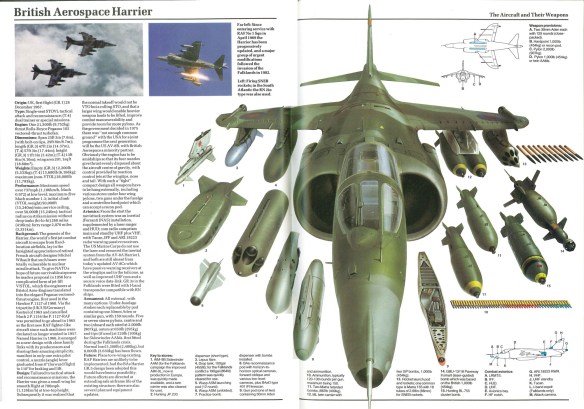Canada
In 1944 Canada became one of the earliest countries to start work on turbojets, and in March 1947 detailed design began on a large, long-range, twin-turbojet interceptor. Designated CF-100, the first prototype flew in 1950 and some 670 aircraft were then built for the Canadian air force, with deliveries starting in 1952. The CF-100 had a maximum speed of 1,060 km/h and a range of some 4,000 km, making it an exceptional aircraft for its time.
Experience with the CF-100 encouraged the Canadian air force and industry to develop an even more ambitious design, the CF-105 Arrow, which, like the CF-100, was a very large, twin-engined, twin-seat interceptor, but this time with delta wings. The first of five prototypes flew in 1958 and immediately demonstrated a very high performance; the production model would have had a maximum speed of 2,100 km/h and a ceiling of 18,300 m, which, with its advanced avionics, placed it ahead of any contemporary Western aircraft in its field.
By early 1959 the programme was going well, with $C300 million already spent and an estimated $C200 million required for completion; anticipated unit cost was $C3.7 million per aircraft. Then, in late February 1959, the Canadian government announced the immediate cancellation of the programme; all aircraft, jigs and tools were immediately destroyed, and some 14,000 workers were laid off. The reason for this sudden change of course, which was a devastating blow to the Canadian aircraft industry, was given as the disappearance of the need for manned interceptors in the missile era.
Such an explanation seemed somewhat hollow (to say the least) when, just two years later, the Canadian air force placed an order for sixty-six US-designed McDonnell F-101 Voodoo twin-seat interceptors, which were built in Canada as the CF-101. Since that time, apart from some Canadian-designed light transports, virtually all aircraft built in Canada have been licence-built US designs.
The UK
At the start of the Cold War the UK was second only to the USA as an aviation power, and considerable resources were lavished on the aircraft industry’s survival. The British actually developed a turbojet engine before the USA, and the Gloster Meteor twin-jet fighter entered service in 1944, followed by the de Havilland Vampire single-jet fighter in 1946, both of which were exported to several NATO air arms in the late 1940s and early 1950s.
The Meteor and Vampire then provided the backbone of the British air force’s fighter force for a decade, while a series of swept-wing designs was developed, culminating in the Hawker Hunter, which entered service, after lengthy delays, in 1957. Once its problems had been resolved it proved to be an effective and popular interceptor and ground-attack aircraft, and a total of 1,525 were manufactured in the UK and a further 381 in Belgium (192) and the Netherlands (189). Thirty Hunters were exported direct to Denmark, and many more to non-NATO countries.
In the 1950s the British judged the major air threat to the UK to be from high-flying Soviet bombers armed with atomic weapons, for which the answer was an extremely fast-climbing, short-range interceptor. Several different prototypes were built and tested, but the English Electric Lightning was selected; this could reach 12,000 m in under 2.5 minutes, and had a ceiling of 18,000 m. It was originally armed with both air-to-air missiles and cannon, but the latter were deleted in later marks. The Lightning entered service with the British air force in 1961 and was deployed in both the UK and Germany, but, although popular with its pilots, it was not bought by any other NATO nation.
In March 1957 the British Air Staff produced an operational requirement for a new aircraft to replace the Canberra, which was in service in large numbers as the air force’s standard light bomber. The aircraft, designated TSR-2 (TSR = tactical strike/reconnaissance), was to be an all-weather, autonomous aircraft, capable of operating at high subsonic speed at very low level, the number required being 138. Numerous initial bids were received, including one, which was rejected out of hand, from Blackburn Ltd for a land-based version of the Buccaneer carrier-based bomber, then under development for the British navy. In 1960 a development contract was awarded to the newly formed British Aircraft Corporation. In 1962 the total programme cost was estimated at £220 million, but this had risen to £272 million in October 1964 and to an extraordinary £750 million in April 1965, when the recently elected Labour government cancelled the entire project. A further echo of the Canadian CF-105 debacle was that all jigs and tools were destroyed, although, as a result of subterfuge, one aircraft survived.
A provisional order was then placed for the American F-111, but this too was cancelled, in January 1968. The yawning gap in air-force capabilities was then filled in two ways. To meet the tactical-fighter requirement, orders were placed for the F-4 Phantom. For the long-range-interdiction, Canberra-replacement role, the Buccaneer (which had been so summarily rejected twelve years previously) was selected as the ‘interim’ solution, while the long-term requirement would be met by a totally new Multi-Role Combat Aircraft (MRCA), which eventually became the Tornado. The TSR-2 was, however, to be the last major British national project, and the MRCA was planned from the outset as a multinational collaborative programme.
France
The French aviation industry made a quite remarkable recovery following the Second World War, and after a decade during which the air force had to depend on US and British aircraft the French air force has been equipped with French or French-led collaborative designs. French designs included the very successful Mystère and Mirage fighters, while collaborative programmes included the Jaguar with the British and the Transall transport and the Alphajet trainer with West Germany.
